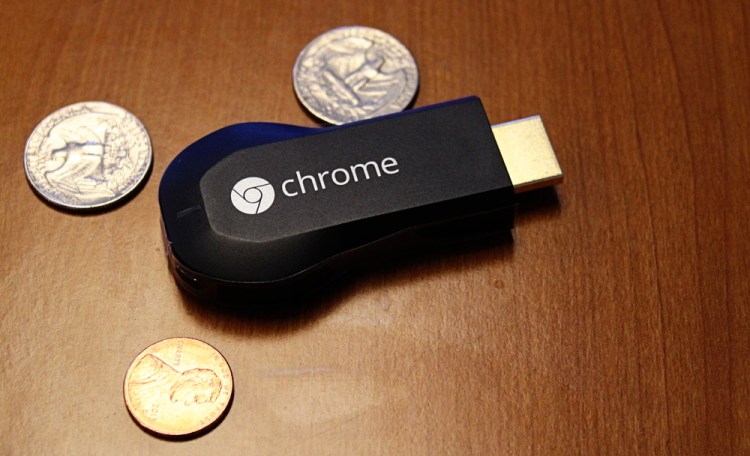Alex Holub is CEO and founder of Vidora.
The relatively successful launch of Google’s new $35 Chromecast dongle — and increasing adoption of technologies like Airplay and Miracast — are painting a vivid picture of the changes in store for the video ecosystem. Below are 6 predictions which describe both the changes in how viewers will watch content and also how the different players in the media ecosystem will engage.
1) Mobile dominates all – increasing viewership & control of the TV
Content will be watched everywhere and anywhere as smartphones and tablets continue to become go-to devices for video viewing (see for instance this report highlighting increases in mobile viewership). Mobile and tablet viewing will compete increasingly with the TV for eyeballs. In addition, the emergence of standards like Airplay and Miracast along and devices like Chromecast will make mobile devices vital in the living room as both content discovery tools and also for controlling the TV.
2) Tablets & smartphones increase IQ (Smart TVs and set-top boxes lose IQ)
As smart devices are increasingly used in the living room for content discovery and control of the TV, it will be less necessary to have TVs directly embed advanced features and functionality. The TV will act more as a passive terminal controlled by smart handheld devices. There will always be a place for a great 60 inch viewing experience in the living room but the real brain will sit in the smart device in your hand.
3) Second screen interactivity & commerce blossoms
The ongoing dream for advertisers and content owners is to more deeply engage consumers as they watch TV. Why not allow a viewer to instantly purchase the suit Don Draper is wearing on the latest Mad Men episode? Smart devices synchronized to TV viewing offer just that potential. Two major hurdles are holding back the dream. (1) There are too many apps for too many different shows making it hard for viewers to find the right app for the show they are currently watching. (2) A synchronized 2nd screen experience requires the viewer to change their behavior while watching the TV: the viewer must switch their attention from the remote or another mobile application to an application synchronized to the current content on TV.
Now consider a world where the 2nd screen is used to discover and control the TV experience. All of a sudden the two hurdles above are solved – the user is already engaged with an app directly tied to the TV experience. That same app offers an ideal platform for creating interactive experiences to buy that Don Draper suit.
4) User interfaces & personalization become critical
Mobile devices are great to watch content anywhere anytime – the downside is they have a lot less screen real-estate than laptops or TVs. With less bits available to convey information, focus will shift to creating great UI/UX experiences. In addition, a premium will be placed on personalization technology which is able to further optimize the limited screen real estate by ensuring the right content is being presented to viewers.
5) Media brands arise as titans
Viewers will have more direct access to the media brands they love and those brands in turn will have more direct access to the consumers. The end result? More powerful media brands which can command loyal audiences and loyal audiences who will demand their favorite brands be on their favorite video services. Great examples of emerging media brands are Vice and Funimation who target lucrative niche audiences with great content.
6) A new breed of content aggregators challenge traditional cable
Mobile and IP-based video distribution in addition to the increasing ability for any content owner to reach viewers on the TV, will result in a new set of players in the video aggregation space. These aggregators will look like ‘Virtual Operators’, delivering all their content over IP, and competing with the stalwarts of the video aggregation space like Comcast, Time Warner, and DirecTV. The new entrants include traditional CE/hardware manufacturers (Apple, Intel, Sony, Samsung) looking to create additional value-added services and revenue streams on top of their broad hardware footprints, and new media/tech companies (Microsoft, Amazon, Google, Yahoo!, AOL) who already own consumer mindshare and content relationships.
Final thought
So what do all these changes mean for the consumer? Great things. Viewers will have more engaging and rich content experiences, access to more content across more services, and the ability to watch their favorite content anytime and anywhere.
 Alex Holub is the founder and CEO of Vidora, a venture-backed mobile video aggregation startup based out of San Francisco, CA. Vidora provides a suite of monetization, personalization, and analytics tools to help premium publishers reach viewers across mobile devices. Vidora’s core technology leverages big data and automated video analysis to create personalized video experiences for consumers, advanced analytics for publishers, and targeted advertising for agencies. Alex studied Machine Learning and Computer Vision at Caltech where he received a PhD. Previous to founding Vidora Alex was part of the initial engineering team at Ooyala.
Alex Holub is the founder and CEO of Vidora, a venture-backed mobile video aggregation startup based out of San Francisco, CA. Vidora provides a suite of monetization, personalization, and analytics tools to help premium publishers reach viewers across mobile devices. Vidora’s core technology leverages big data and automated video analysis to create personalized video experiences for consumers, advanced analytics for publishers, and targeted advertising for agencies. Alex studied Machine Learning and Computer Vision at Caltech where he received a PhD. Previous to founding Vidora Alex was part of the initial engineering team at Ooyala.



